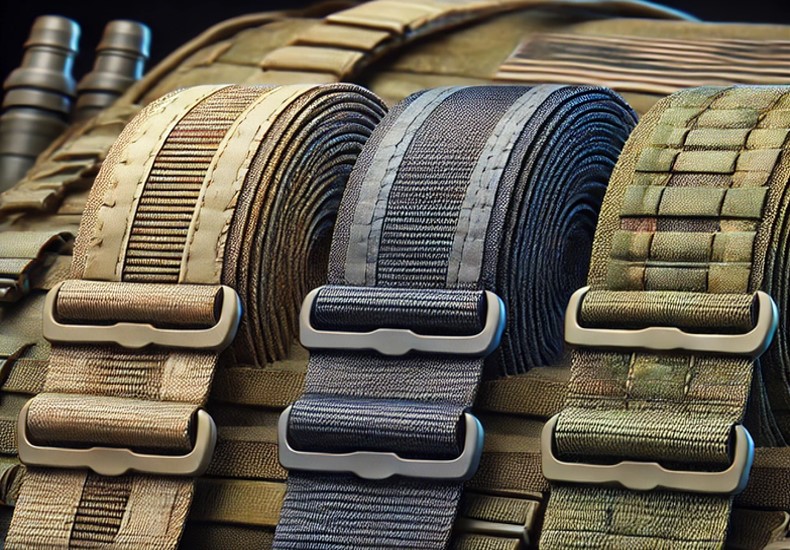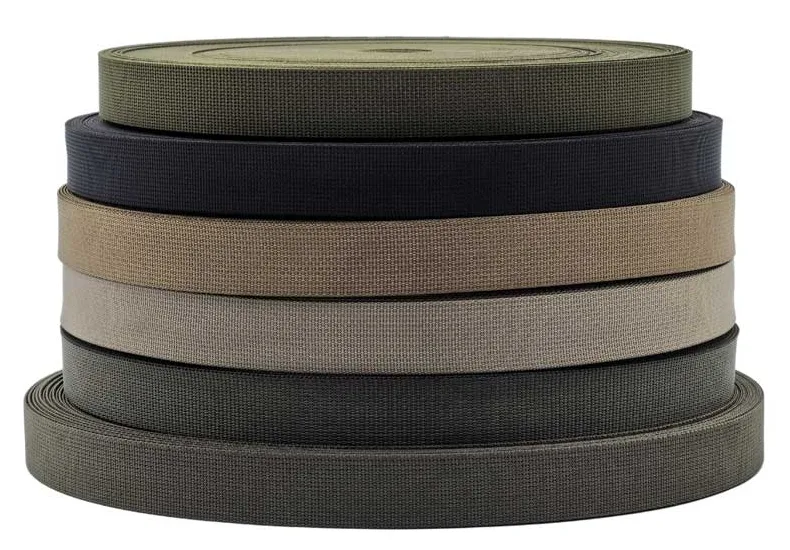
Webbing straps play a crucial role in load carriage, equipment securing, and the overall operation of a soldier’s load-carrying equipment. Webbing straps must be light, durable, and resistant to weather conditions such as water, heat, and abrasion. Over the years, different materials have been used to manufacture military webbing, each with distinct advantages and disadvantages. The most common materials used are nylon, polyester, and aramid (Kevlar).
Nylon is the most common material used for webbing in military applications because of its strength and flexibility. Nylon webbing has good tensile strength, and it will never snap even with heavy loads. Because of this, it is applied in tactical gear harnesses, belts, and shoulder straps. Nylon is very elastic and can be stretched under tension without distorting its original form.
The second advantage of using nylon webbing is that it has abrasion and mildew resistance. When soldiers are operating in wet or humid environments, the synthetic nature of nylon will not allow mold and bacteria to grow, thereby providing a longer lifespan. A disadvantage of nylon, however, is that it will absorb water, which will lead to excess weight and a slower drying time. In addition, prolonged exposure to UV radiation can weaken nylon fibers, causing them to degrade over time.
The second synthetic material used in military webbing is polyester. Polyester is not as strong in tension as nylon but is more water and sunlight-resistant. While nylon has high water absorbency, polyester does not, making it the ideal selection for marine or wet environments. It also dries faster, avoiding weight overload via water retention.
Polyester webbing is also resistant to UV radiation and therefore stronger when exposed to sunlight. Therefore, it is a common material for making desert or wilderness equipment. Polyester is not as flexible as nylon and is stiffer for certain uses. Despite that, it is well maintained under tension and is suitable as load-bearing gear.

Aramid webbing, or Kevlar webbing, is a high-strength webbing that is extremely popular for its high strength-to-weight ratio and high tensile strength. Aramid webbing does not stretch when it is loaded, as opposed to polyester and nylon, which increases its strength and dependability in heavy-duty applications such as ballistic vests, parachute harnesses, and rappelling gear.
Kevlar webbing possesses very good heat, flame, and chemical resistance properties that make it suitable for use in combat, fire protection, and aerospace. In comparison to synthetic products that distort when subjected to extreme heat, Kevlar does not distort even in extreme conditions. Its superior cut and abrasion resistance also means greater durability in harsh environments.
However, Kevlar’s UV and water resistance isn’t that great and will be affected during use unless it’s properly treated. Nonetheless, its unmatched strength and elasticity make it the webbing of choice for military use.
When selecting materials for military webbing straps, strength, flexibility, resistance to water, and resistance to UV are of utmost consideration. Nylon is used due to its elasticity and durability, and polyester is best used for high-UV and exposure applications. Aramid (Kevlar) webbing is best used in high-stress applications due to its extremely high tensile strength, heat resistance, and cut resistance. Choosing the appropriate webbing material ultimately depends on the operating requirements and the environment in which the equipment will be used.